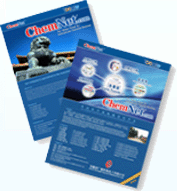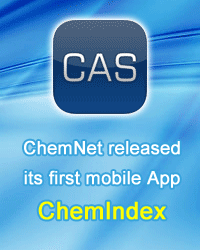Chemical News
-
How green is my Apple?
https://www.chemnet.com Mar 04,2010 Forbes
Last year Casey Harrell, coordinator of Greenpeace's electronics campaign, paid Apple's Cupertino, Calif., campus a friendly visit. Apple had promised all its products would be free of a toxic chemical known as polyvinyl chloride (PVC). It had done the job, almost.
The holdup: Apple had to develop a PVC-free power cord (in white, of course) and get it certified by Underwriter's Laboratory. Harrell knew UL was testing the product. Apple's employees, however, weren't saying much.
"Can you tell me when you'll be finished having the product tested?" Harrell asked.
"No," Apple employees responded.
"Can you keep me up to date on the process?" Harrell asked.
"No," Apple employees replied.
"Do you know the date the cord will go on sale?"
The employees couldn't answer.
Harrell laughed.
"How about this," he said. "If there is a date, and the date happens, can you tell me?"
"Yes," the Apple employees responded.
For Apple, actions speak louder than words. Much of the time action is the only way the secretive company communicates. Apple declined to comment for this story. "If they're not happy with you, they're not going to call you on the phone to yell at you," Harrell says.
Apple just won't call you at all.
Greenpeace, however, did give Apple a reason to yell. In September 2006 Greenpeace found Apple's gear scored badly "on almost all criteria" on its green electronics scorecard. So the following month Greenpeace launched its "Green My Apple" campaign, asking Apple users to take their case directly to Apple chief Steve Jobs.
Toxic chemicals don't just make old personal computers a hazard, Harrell says, they make recycling old machines costlier. Building greener machines, however, is a complex proposition. Most computers are assembled overseas using parts from more than a dozen separate manufacturers.
But greener machines are possible. A little outside pressure, Harrell says, can elevate green ideas inside any technology company. "Sometimes our work can create space inside companies, where some employees who don't have maneuvering room suddenly have space the size of a Mack truck," Harrell says.
For whatever reason, Apple opened up. In May 2007 Jobs sent out a letter. The normally secretive Jobs laid out a plan to remove toxic chemicals from Apple's products. Among other things, Jobs wrote that Apple would eliminate the PVC and brominated flame retardants (BFRs) from its products. "It is generally not Apple's policy to trumpet our plans for the future. ... today we're changing our policy," Jobs wrote.
In October 2007 Jobs met with Greenpeace International Executive Director Gerd Leipold.
Apple said little about its progress. Harrell says he knew Apple was serious about meeting its targets in 2008 after partner manufacturers and components suppliers in Taiwan and Shanghai told him they were hustling to remove toxins from their products. "Apple was coming to them and telling them straight out, 'If you want our business post-Jan. 1, 2009, you've got to meet these requirements.'" Harrell says.
The result: Apple is now getting good marks from Greenpeace, ranking fifth among electronics manufacturers it once lagged. It's also helped create a ready supply of greener computer components. What's next? Greenpeace is now looking at more than just gadgets. Last week, for example, Greenpeace pointed the finger at social network Facebook for using coal plants to provide electricity for its servers.
Will the campaign damage Facebook? Greenpeace's "Green My Apple" campaign wound up helping the gadget giant: Apple now markets its products as among the greenest. "It's good to see companies grow into these roles, to truly take leadership positions," Harrell says. If Apple's history is any guide, Facebook might come out stronger.
 Print |
Print |  add to Favorites |
add to Favorites |  Close
Close


